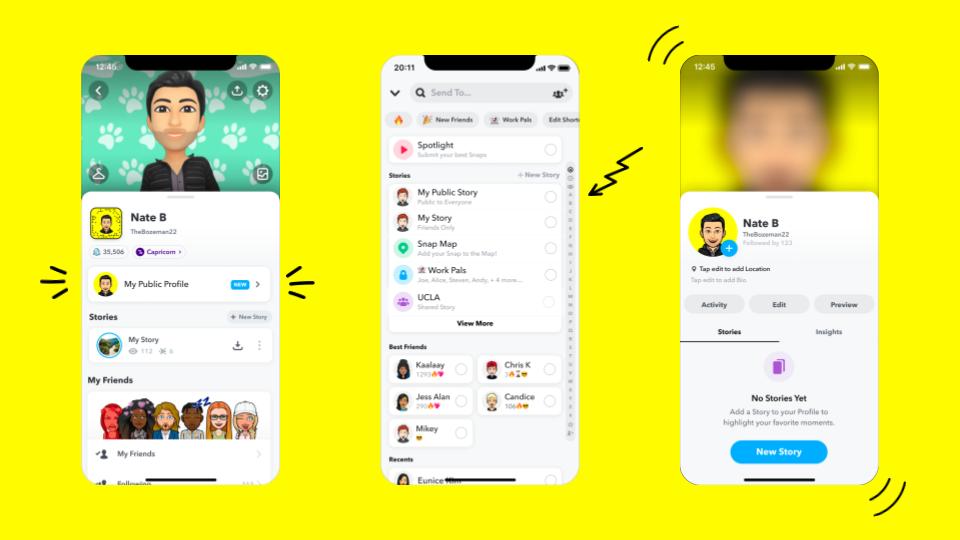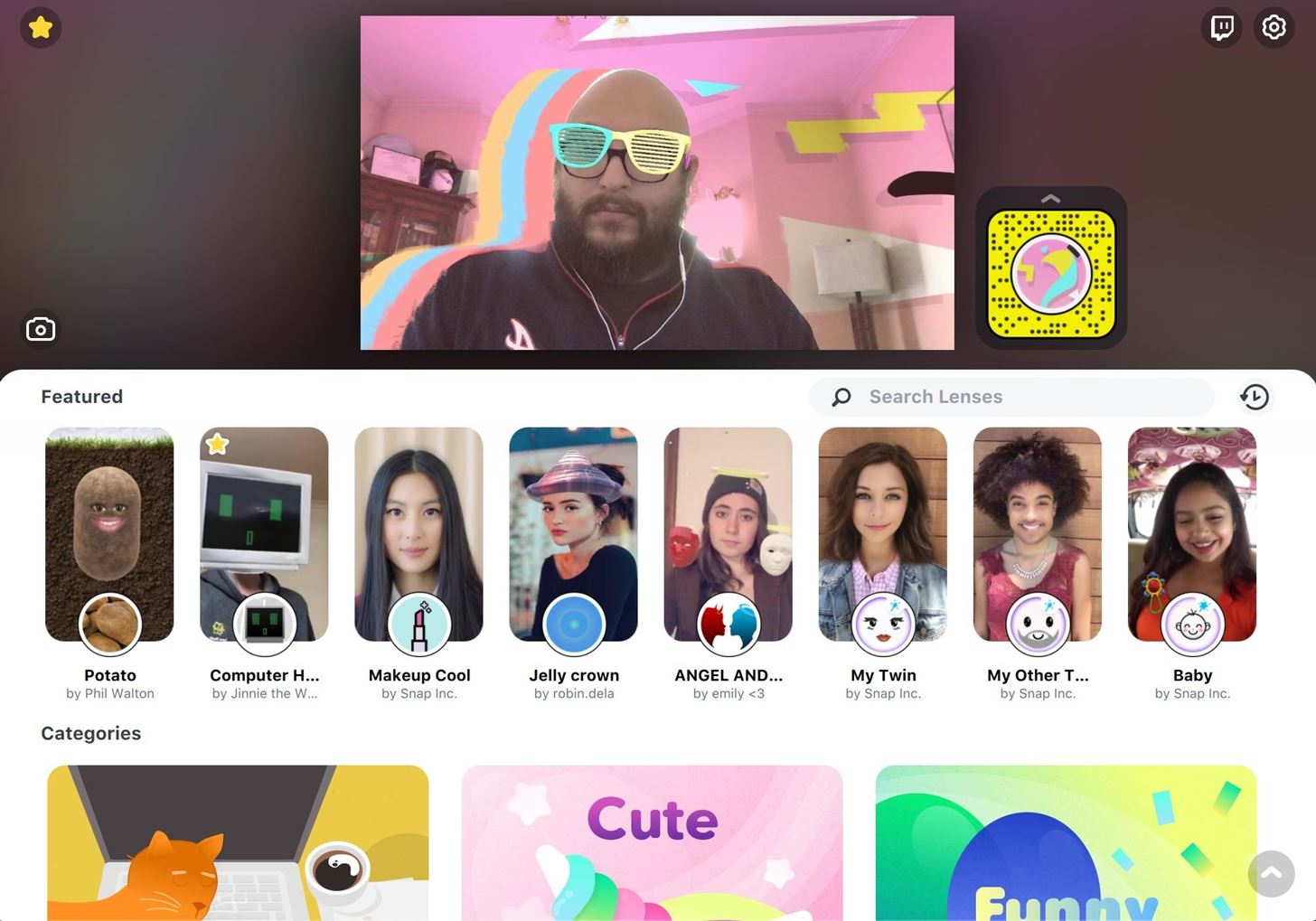Introduction
The world of social media is constantly evolving, and Snapchat has been at the forefront of many of these changes. One of the latest advancements in Snapchat’s technology is the introduction of AR lenses. These lenses have taken Snapchat’s augmented reality features to a whole new level, offering users the ability to experience digital effects and filters like never before.

Definition of AR Lenses
AR, or augmented reality, is a technology that allows digital elements to be overlaid in the real world. AR lenses are Snapchat’s version of this technology and enable users to enhance their photos and videos with digital effects and filters. AR lenses use a combination of computer vision and machine learning algorithms to detect and track facial features, allowing for the creation of immersive experiences.
Snapchat’s new ‘Cosmic Lens’ introduction
Snapchat recently introduced a new AR lens called the ‘Cosmic Lens‘, which has been created using generative AI. This lens is a great example of how AR technology can be used to create highly immersive and interactive experiences. The Cosmic Lens allows users to explore a virtual universe, complete with stars and galaxies. This lens is driven by generative AI, which means that the lens can create unique and random universes for users to explore.
In conclusion, AR lenses are an exciting development in the world of social media and offer users a new way to experience digital effects and filters. Snapchat’s new Cosmic Lens is a great example of how this technology can be used to create highly immersive experiences. As AR technology continues to evolve, we can expect to see even more exciting developments in the future.
How do AR Lenses work?

AR lenses use augmented reality technology to superimpose digital elements onto the real world. This technology works by using computer vision algorithms to detect and track facial features, such as the position of the eyes and the mouth. Once these features have been detected, the lens can apply a digital filter or effect to the user’s face in real time.
Explanation of Augmented Reality
Augmented reality is a technology that allows digital elements to be overlaid in the real world. Unlike virtual reality, which creates a completely new digital environment, augmented reality enhances the user’s real-world experience. AR technology works by using computer vision algorithms to detect and track objects in the real world, allowing digital elements to be placed accurately in 3D space.
Snapchat’s technology for AR Lenses
Snapchat’s AR technology for lenses uses a combination of computer vision and machine learning algorithms to create immersive experiences for users. Technology is constantly evolving, with new features and capabilities being added all the time. One of the key features of Snapchat’s AR technology is its ability to detect and track facial features in real-time. This allows for the creation of highly interactive and engaging AR experiences.
In conclusion, AR lenses use augmented reality technology to enhance the user’s real-world experience with digital elements and effects. The technology works by using computer vision algorithms to detect and track objects in the real world.
Snapchat’s AR technology for lenses uses a combination of computer vision and machine learning algorithms to create immersive experiences for users. As this technology continues to evolve, we can expect to see even more exciting and innovative uses for AR lenses in the future.
The Role of Generative AI in AR Lenses

AR lenses are rapidly evolving, and one of the latest advancements is the use of generative AI. Generative AI is a technology that uses machine learning algorithms to generate unique and creative outputs based on input data. In the context of AR lenses, generative AI can be used to create new digital elements and effects that can be applied to photos and videos in real-time.
Definition of Generative AI
Generative AI is a subset of artificial intelligence that focuses on creating new outputs based on input data. This technology uses machine learning algorithms to learn from data and create new outputs that are unique and creative. Generative AI can be used in a variety of contexts, including art, music, and design.
Benefits of using Generative AI in AR Lenses
The use of generative AI in AR lenses has several benefits. One of the main benefits is the ability to create unique and creative digital effects and filters. Because generative AI uses machine learning algorithms to create new outputs based on input data, the resulting effects and filters can be highly customized and personalized.
Another benefit of using generative AI in AR lenses is the ability to create new digital elements and effects quickly and efficiently. Because generative AI can create new outputs automatically, developers can save time and resources that would have otherwise been spent creating these elements manually.
In addition, the use of generative AI in AR lenses can help to enhance the user experience by creating more engaging and interactive digital effects. By using machine learning algorithms to create these effects, AR lenses can offer a more personalized and immersive experience for users.
In conclusion, the use of generative AI in AR lenses is an exciting development that offers several benefits. This technology allows for the creation of unique and creative digital effects and filters and can help to enhance the user experience by offering more engaging and interactive elements. As AR technology continues to evolve, we can expect to see even more innovative uses of generative AI in the future.
The Cosmic Lens – A Breakdown
Snapchat’s latest AR lens, the Cosmic Lens, is an impressive showcase of the capabilities of AR technology. This lens uses generative AI to create a variety of unique and creative effects that can be applied to photos and videos in real time. In this article, we’ll take a closer look at the Cosmic Lens and explore how it works.
Description of the Cosmic Lens

The Cosmic Lens is a new AR lens developed by Snapchat that allows users to apply a variety of digital effects and filters to their photos and videos. These effects include a range of cosmic-themed elements, such as planets, stars, and galaxies. The lens uses generative AI to create these elements, which can be customized and personalized based on user input.
One of the standout features of the Cosmic Lens is its ability to create realistic and immersive 3D effects. These effects are created using depth-sensing technology, which allows the lens to accurately track the position of objects in the scene and apply digital effects accordingly.
How the Cosmic Lens Works
The Cosmic Lens uses a combination of machine learning algorithms and depth sensing technology to create its impressive effects. When a user activates the lens, their device’s camera captures a live feed of the surrounding environment. This feed is then processed by the lens, which uses machine learning algorithms to identify objects and apply digital effects.
The lens also uses depth-sensing technology to create realistic 3D effects. This technology works by using sensors to measure the distance between the camera and objects in the scene. By combining this depth of information with machine learning algorithms, the Cosmic Lens can create highly accurate and immersive digital effects.
In conclusion, the Cosmic Lens is a stunning example of the power of AR technology. By using generative AI and depth-sensing technology, Snapchat has created a lens that offers a range of unique and creative effects that can be customized and personalized by users. As AR technology continues to evolve, we can expect to see even more impressive uses of this technology in the future.
The Future of AR Lenses
AR lenses have come a long way since their introduction, and they continue to evolve and improve with each passing year. In this article, we’ll take a look at some of the advancements in AR lens technology and explore the potential uses of these lenses in the future.

Advancements in AR Lenses
One of the biggest advancements in AR lenses has been the use of generative AI to create more realistic and immersive effects. This technology allows lenses to create more accurate and detailed effects based on the surrounding environment, as well as user input.
Another important advancement in AR lens technology has been the development of more sophisticated tracking and sensing systems. These systems allow lenses to better understand and interact with the surrounding environment, which in turn leads to more realistic and immersive effects.
Potential Uses of AR Lenses
AR lenses have already found a variety of uses, from entertainment and gaming to marketing and advertising. But the potential uses of these lenses are virtually limitless.
One potential use of AR lenses is in education and training. Lenses could be used to create immersive learning experiences that allow students to interact with complex concepts and environments in a more hands-on way.
Another potential use of AR lenses is in healthcare. Lenses could be used to create simulations of medical procedures or to provide doctors with real-time information about patients.
AR lenses also have the potential to revolutionize the way we shop. Retailers could use AR lenses to create virtual shopping experiences that allow customers to see how products look in their homes or in real-world environments.
In conclusion, the future of AR lenses is bright. As technology continues to advance, we can expect to see even more sophisticated and immersive lenses that have the potential to transform a wide range of industries and applications. Whether it’s entertainment, education, healthcare, or retail, the possibilities are virtually endless.
Conclusion – Recap of AR Lenses and Snapchat’s Cosmic Lens
In this article, we’ve explored the fascinating world of AR lenses and how they have transformed the way we interact with the world around us. We’ve looked at the technology behind these lenses, including generative AI, and the potential uses of AR lenses in a wide range of industries.
We’ve also taken a closer look at Snapchat’s new ‘Cosmic Lens’ and how it uses generative AI to create an immersive and visually stunning experience for users.
AR lenses have come a long way since their introduction, and the future looks even brighter. As technology continues to advance, we can expect to see even more sophisticated and immersive lenses that have the potential to transform the way we work, learn, and play.

Final thoughts on the future of AR Lenses
In the coming years, we can expect to see a continued evolution of AR lenses and their applications. From entertainment and education to healthcare and retail, the possibilities are endless.
However, as with any technology, there are also concerns about privacy and security. As AR lenses become more ubiquitous, it’s important to ensure that user data is protected and that the lenses are used responsibly.
Despite these challenges, the potential of AR lenses is truly exciting. Whether it’s exploring new worlds through a Snapchat lens or learning complex concepts through an immersive educational experience, AR lenses have the power to change the way we see and interact with the world around us.
FAQs
What is AR Lenses?
AR Lenses, also known as Augmented Reality Lenses, are digital filters that use augmented reality technology to overlay computer-generated images onto real-world environments. These lenses can be accessed through smartphone apps like Snapchat and Instagram, and they allow users to create and share immersive, interactive experiences.
How do AR Lenses work?
AR Lenses work by using computer vision technology to track the movements of the user’s face and other objects in the real world. The lenses then use this information to overlay digital content onto the user’s environment, creating the illusion of an interactive, three-dimensional experience.
What is Augmented Reality?
Augmented Reality, or AR, is a technology that uses computer-generated images and other digital content to overlay information onto the real world. Unlike virtual reality, which creates entirely immersive, computer-generated environments, AR blends digital content with the user’s real-world environment, creating an interactive, augmented experience.
What are some potential uses of AR Lenses?
AR Lenses have a wide range of potential uses, from entertainment and gaming to education and healthcare. For example, companies could use AR Lenses to create immersive, interactive experiences for their customers, while educators could use AR Lenses to teach complex concepts in a more engaging and interactive way.



















